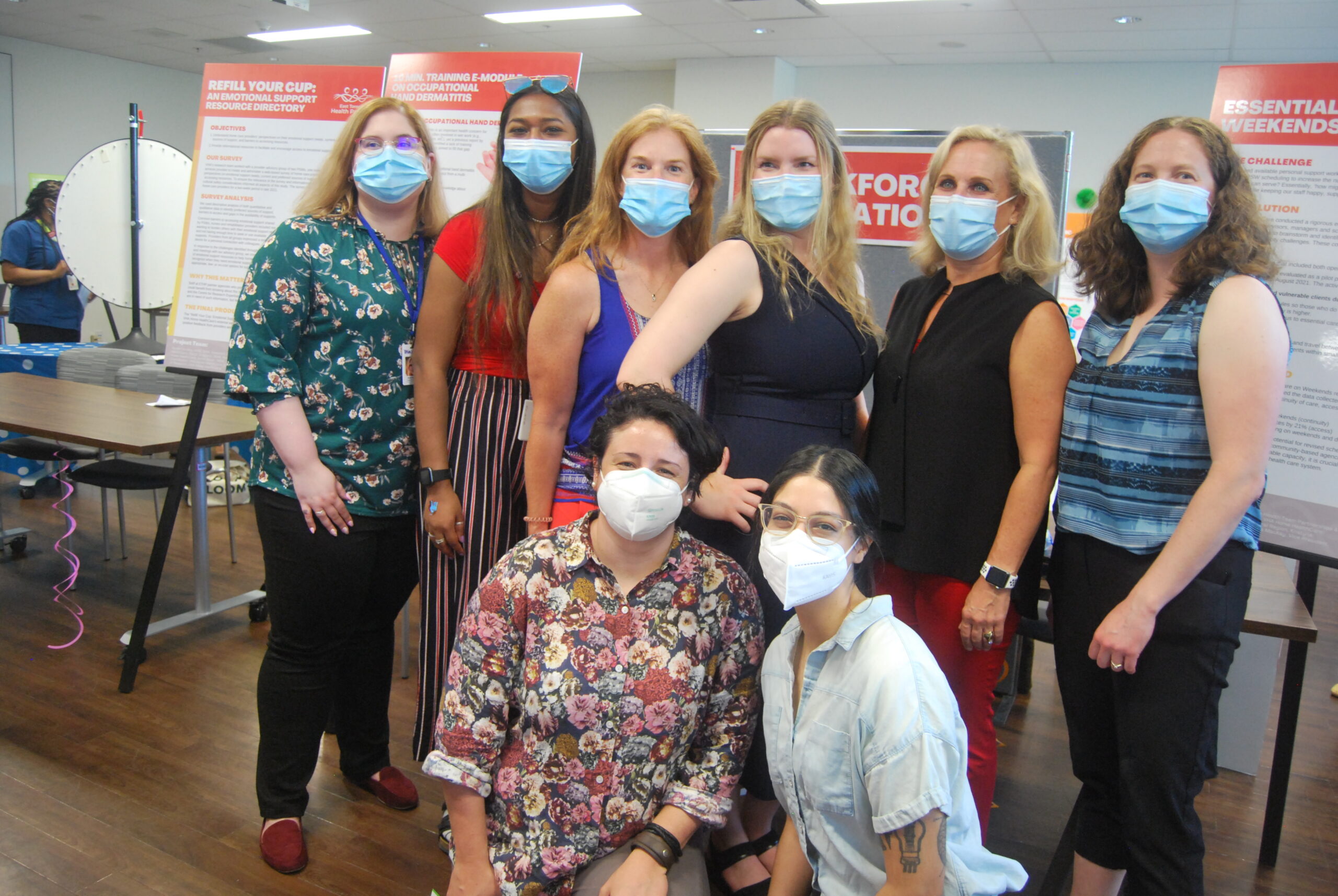Inaugural VHA RAIN Drop Event Presents New Research: an Economic Analysis Supporting Increased Investment in Ontario’s Home Care Sector

Better for Healthcare Workers, Better for Patients, Better for Ontarians
The number of Ontarians in need of home care services has been growing rapidly with demand projected to increase by 53% between 2019 to 2031. The majority of older adults want to remain at home for as long as possible; for most, home care is also the most cost-effective care option. New research conducted by VHA Home HealthCare shows that increased public investment in home care worker wages is a promising option for growing this workforce and increasing health care system capacity to meet the growing demand for care.
On November 16, VHA hosted its first virtual Research and Innovation Network (RAIN) event to share current research with our community. RAIN is a collaborative network of VHA clients, carers and staff and service providers with lived experience, knowledge and expertise in home care who help to shape the organization’s research activity and influence decisions made throughout the research process.
Dr. Katherine Zagrodney, a health economist and VHA researcher, presented an economic analysis quantifying the expected impact of raising home care worker wages on retaining skilled home care providers. This work is VHA’s contribution to an exciting research-based partnership with the Ontario Community Support Association (OCSA), to inform their advocacy for wage parity between PSWs who work in home care and long-term care.
Personal support workers (PSWs) deliver three quarters of paid home care services, but because of differences in funding between sectors, home care PSWs are paid, on average, $5 less per hour than their colleagues in long-term care. The home and community sector is by far the least expensive option for care provision, and demand for these services is rising as a growing number of people require some support in their daily lives, without needing the high level of care provided by institutions. In order to meet the growing demand for in-home care, we need to attract and retain an increased number of skilled PSWs. There are many reasons beyond wage for people to choose to work in the home and community sector and wage parity would make this decision easier for many who love community-based work. In doing so, it would help to stabilize the home care workforce and increase capacity for the healthcare sector as a whole.
“There are many logical and moral reasons for making sure home care PSWs can be paid the same as other sectors given the nature and importance of the work that PSWs do every day. We hope our research can help to inform decision-making regarding investments in our sector,” said Dr. Zagrodney, Senior Research Associate & Quantitative Research Lead at VHA.
Working with OCSA, which represents close to 230 not-for-profit organizations that provide home care and community support services to over one million Ontarians, the VHA Research team was asked to analyze the financial impact for the healthcare system of OCSA’s proposal to invest in wage parity between PSWs working in home and community care and those working in long-term care.
At present, hospital care costs seven times more than home care and long-term care is double the cost of home care. Dr. Zagrodney’s analysis finds that even with PSW wage parity, home and community care will continue to be, by far, the least expensive care option. Assuming that care continues to be provided at current service levels, wage parity will add only $3 to the daily cost of home and community care, while growing capacity in the sector by an estimated 21% and providing a return on investment (ROI) of 88%. Even if we assumed that newly-accommodated clients would require high-intensity care to live safely in the community, the ROI remains high at 26%. Moving forward, this analysis can be used by OCSA and others to support evidence-based decision-making and policy development.
While the present analysis focuses solely on PSWs, who provide three quarters of paid home and community care, Dr. Zagrodney says “This is just a starting point and our work will expand to other point-of-care providers with time.”
Dr. Zagrodney and VHA’s Research team were thrilled to share the results of this impactful research at the first of many RAIN events to come. “The network was launched to bring our community together to learn about current research and innovation activity at VHA, and to open the floor for discussion between VHA clients, caregivers, point-of care service providers, staff, researchers and external partners,” said Dr. Sandra McKay, Vice President of Research and Innovation at VHA.
“We all care deeply about improving home care and we know that together—through listening, learning and sharing at events like this one—we can create positive change in our sector through evidence and data-based research,” she added.
If you would like to sign up to be a part of RAIN, please visit our Research and Innovation Network: Sign-Up for Client and Provider Partners form. If you have any questions, you can reach out to the VHA Research team at researchhelp@vha.ca.
